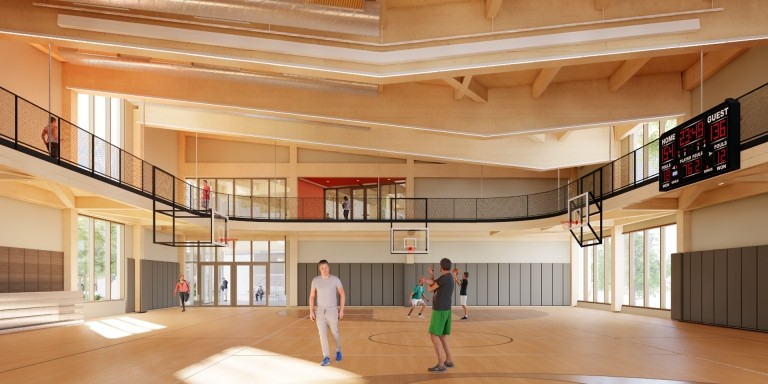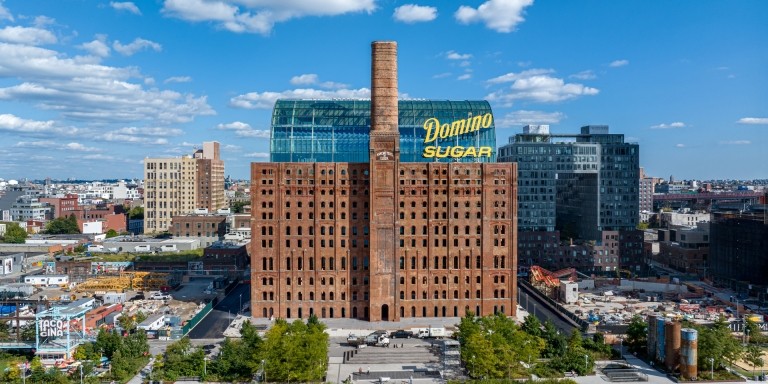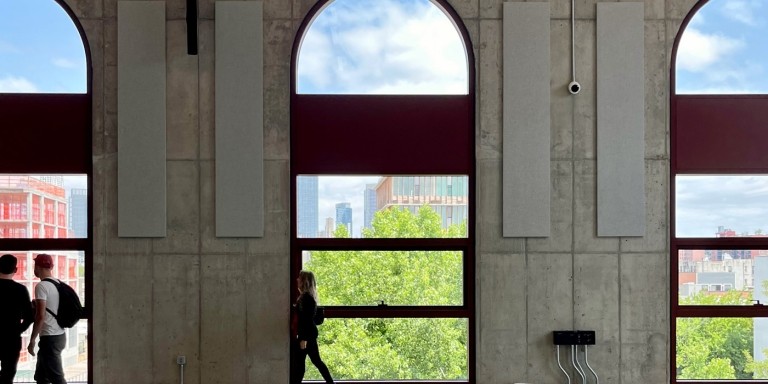Erie-Lackawanna Pedestrian Bridge Named Project of the Year by Association for Bridge Construction and Design

The Western New York Chapter of the Association for Bridge Construction and Design has recognized the Erie-Lackawanna Pedestrian Bridge as the 2012 Project of the Year for bridges under $2M. T.Y. Lin International (TYLI) completed the Erie-Lackawanna Rails-to-Trails Pedestrian Bridge conversion project – a project that had been a vision for nearly 25 years before becoming a reality – for the City of Rochester.
For this $1.5 million undertaking, TYLI provided engineering, design and construction phase services to convert the abandoned, historic City-owned Erie-Lackawanna Railroad Bridge over the Genesee River into a multi-use pedestrian bridge.
The original structure dates back to 1854 when it carried the Rochester branch of the Erie Railroad across the Genesee River. Between 1917 and 1920, it was enlarged as part of the third expansion of the Erie Canal. This heavy plate girder structure is carried on a series of cut limestone piers. The structure showcases standard engineering and construction practices of the day and is considered by New York’s State Historic Preservation Office to be a cultural resource eligible for inclusion in the State and National Registers of Historic Places. This project married innovative engineering principles with historical appreciation to create an enduring structure offering a quality of life improvement to the community. Throughout the course of the project, TYLI and the City of Rochester worked hand in hand to build community support and address design challenges. One such hurdle was to create an aesthetically-pleasing, ADA compliant access ramp within a severely limited physical space that was rife with utility conflicts. Success was achieved with a unique serpentine alignment that avoided the utilities, kept an acceptable grade for ADA access, and complemented the natural environment of the river walk area.
The final design of this adaptive re-use project incorporated approximately 1600 linear-feet of multi-use trail to and across the existing railroad bridge – connecting the University of Rochester, Bausch and Lomb Park, the Genesee Riverway Trail, the Plymouth-Exchange neighborhood, and the Vacuum Oil Brownfield Opportunity Area while providing another vital trail link to the downtown area. The impact of the Erie-Lackawanna Pedestrian Bridge is being acknowledged on all sides. At the ribbon cutting celebration, the City was presented with the 2012 Champion Award from the New York State Bicycle Coalition in recognition of the City’s notable achievements in promoting cycling throughout the Rochester region. The award honors communities that exemplify a willingness to invest in programs that improve the lives of cyclists, increase accessibility, and support green initiatives.
“The Erie-Lackawanna Pedestrian Bridge further establishes our commitment to invest in the natural resources that give our city such an incredible quality of life, “ said Mayor Thomas Richards. “For many decades, Rochester literally turned its back on the Genesee River. With projects like this, we are giving our residents and visitors new opportunities to experience the beauty of this river on a daily basis.”
At the ribbon cutting ceremony, University of Rochester President Joel Seligman affirmed the University’s commitment to the area and echoed the Mayor’s sentiments stating, “The University is proud to partner with the City, neighbors, community leaders and private developers on transformational projects and initiatives to revitalize and redevelop the areas surrounding the University. The completion of this bridge, like the pedestrian bridge before it, is another physical embodiment of our collective efforts to enhance our connection with the City and its neighborhoods. We remain committed to connecting with and contributing to our community, and appreciate the continued collaboration that makes this important work possible. Today, we celebrate the many ways that the University and community are linked – now and for many years to come.”
The full service project included planning, detailed structural inspection, design of a new concrete deck, landscape architecture, and community involvement. It blended conventional steel bridge rehabilitation and concrete repairs with modern day pre-cast retaining wall systems. Today, the historic Erie-Lackawanna Pedestrian Bridge is a scenic structure providing an important link to the Genesee Riverway Trail for City of Rochester residents and visitors.
Related News
-
Mar 26, 2024
Buildings Sector, Winter 2023-24: Openings, Awards, and On the Boards
AwardsProject NewsProject CompletionsProject Milestones -
Jan 17, 2024
Buildings Sector, Fall 2023: Openings, Awards, and On the Boards
AwardsProject NewsProject CompletionsProject Milestones -
Oct 30, 2023


